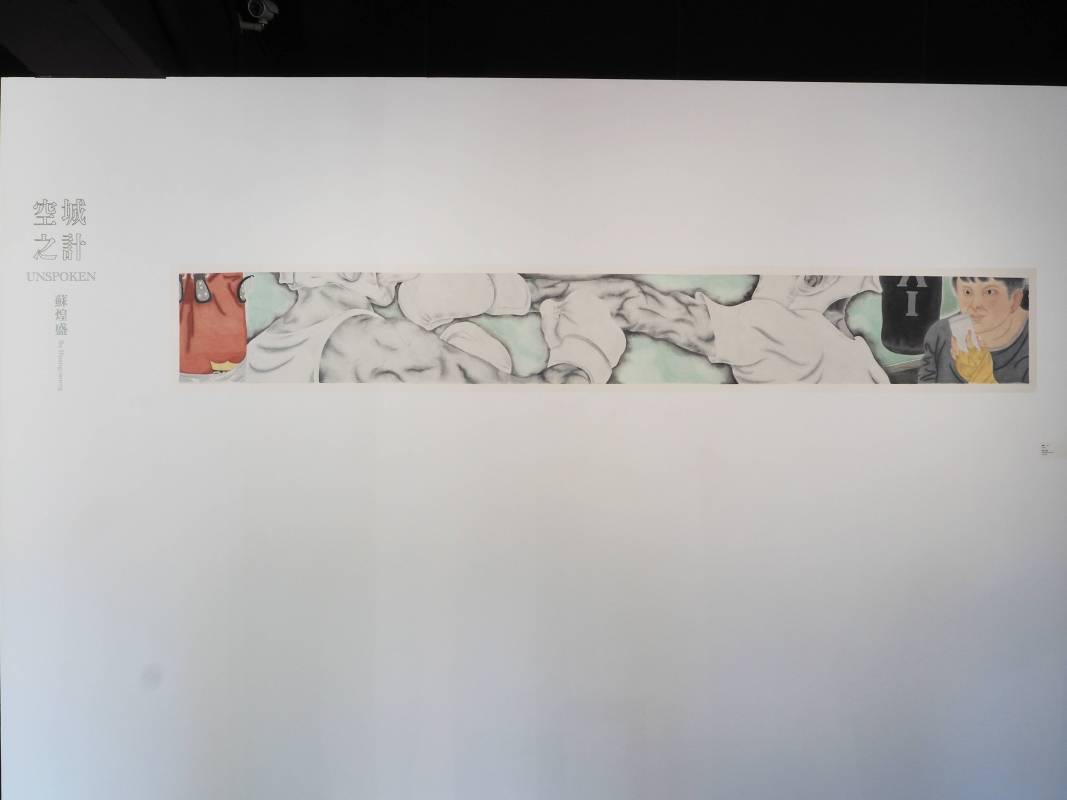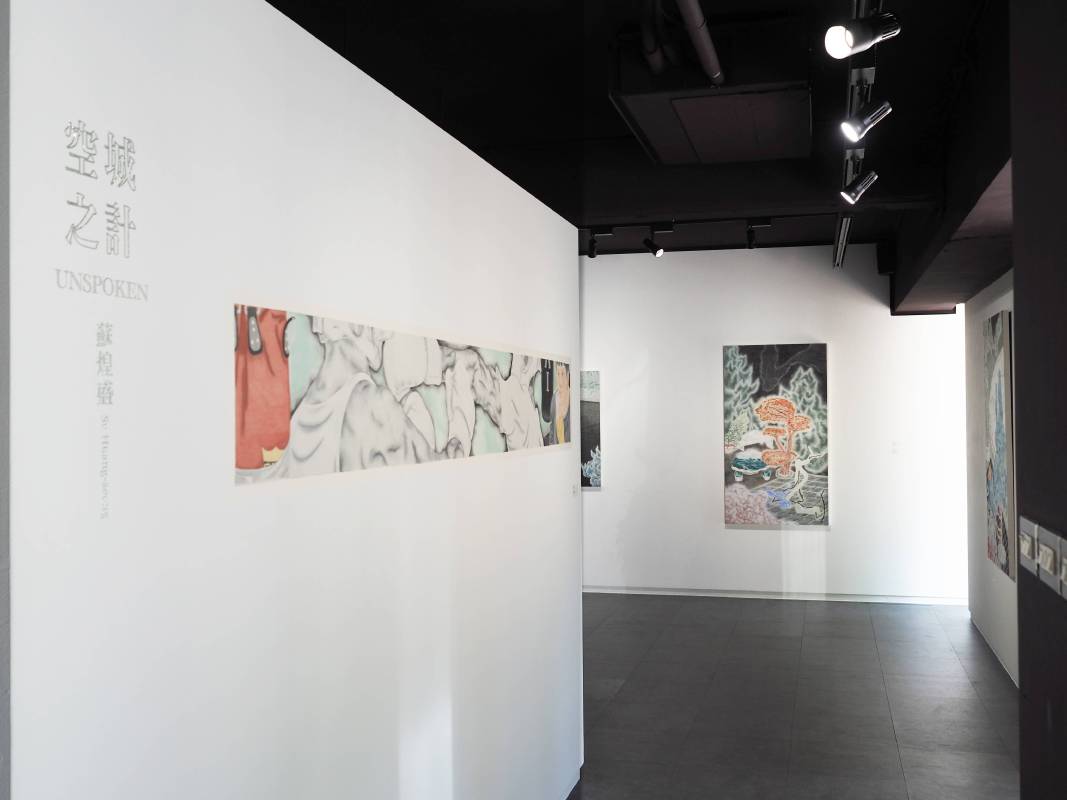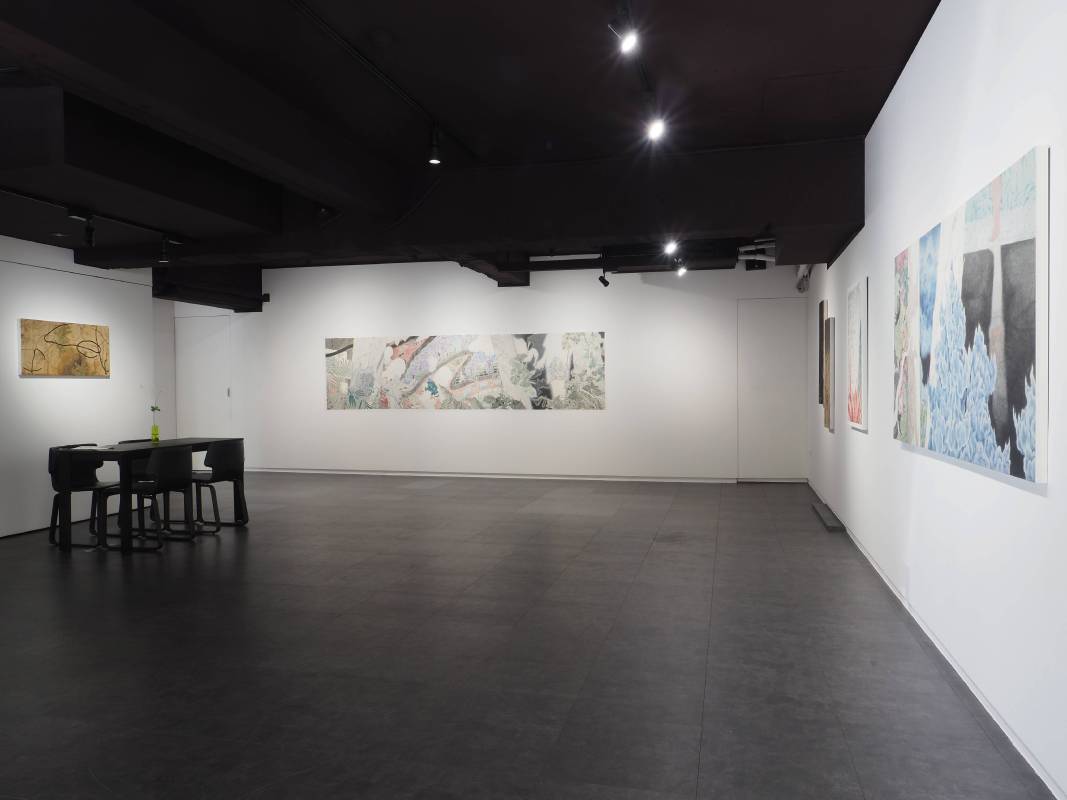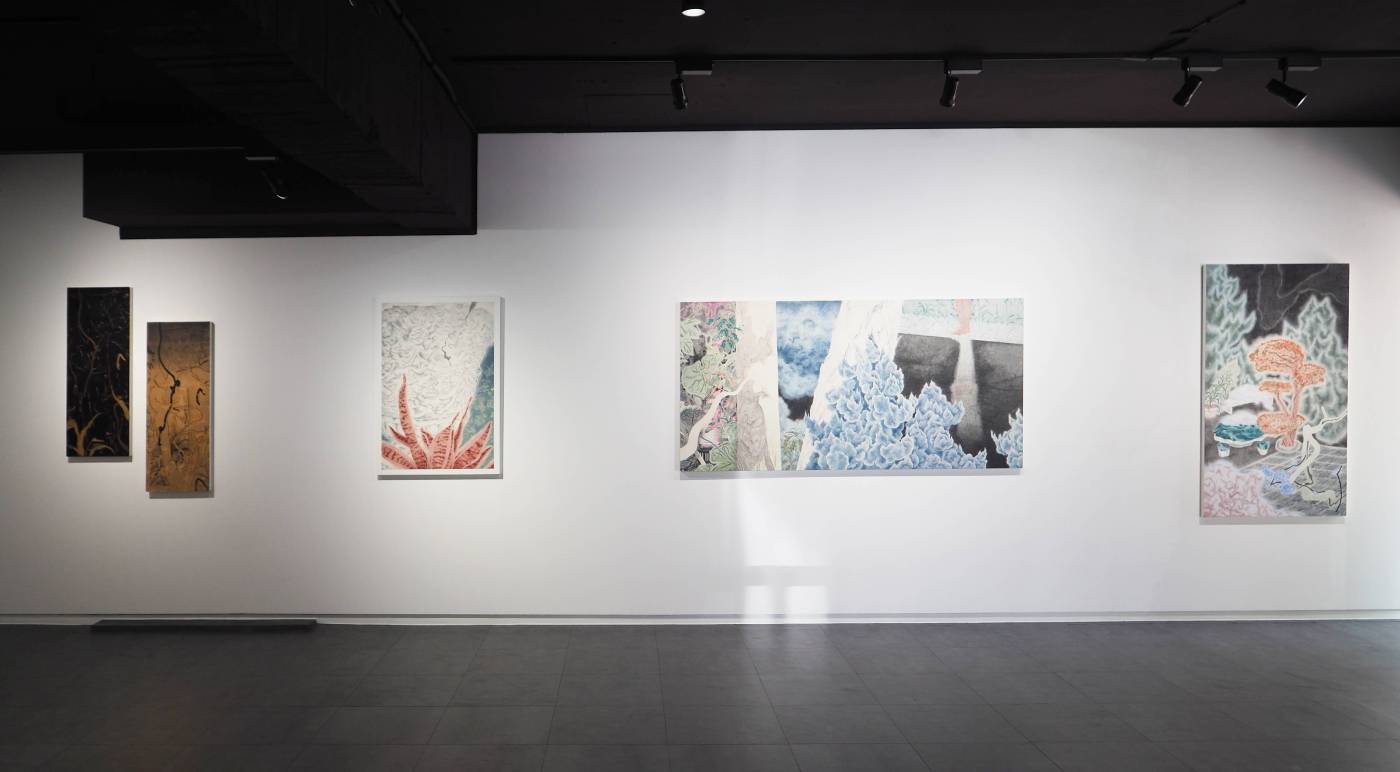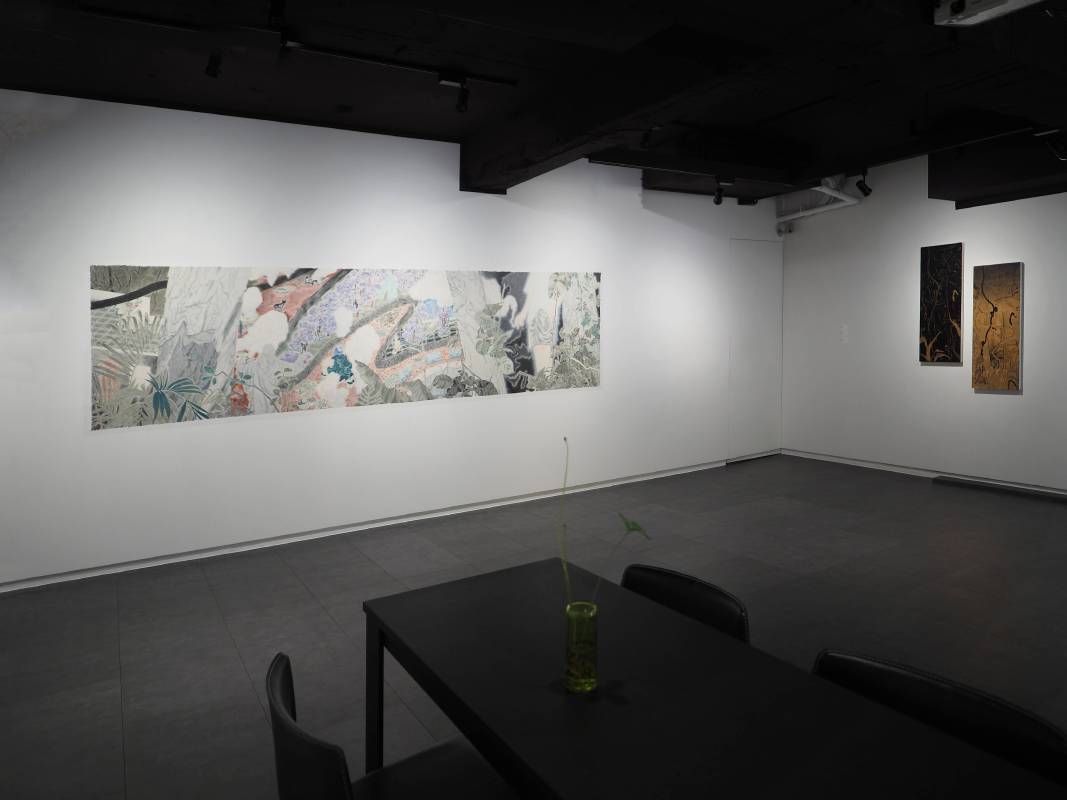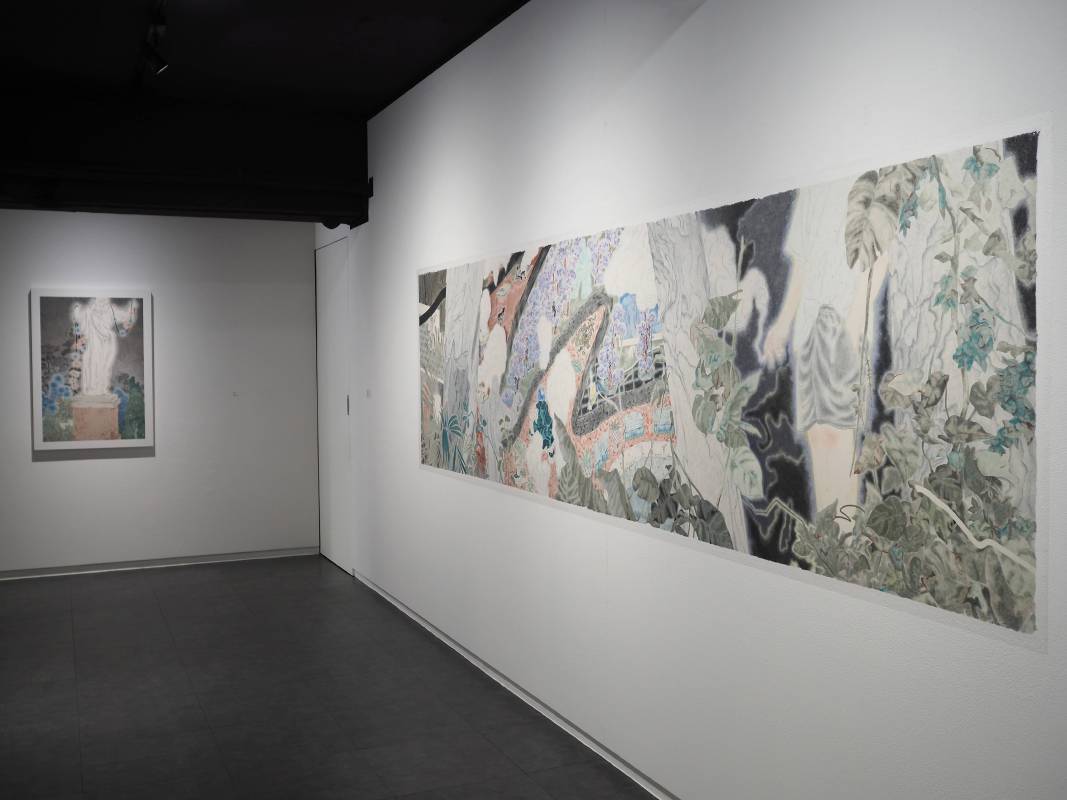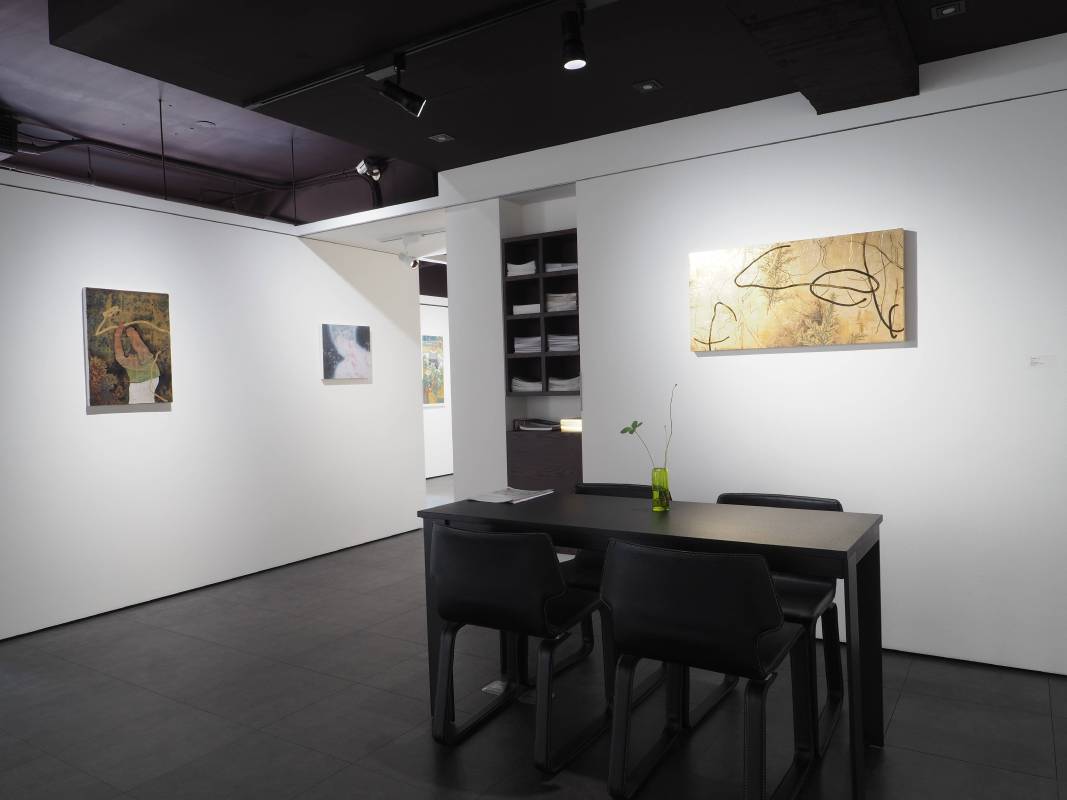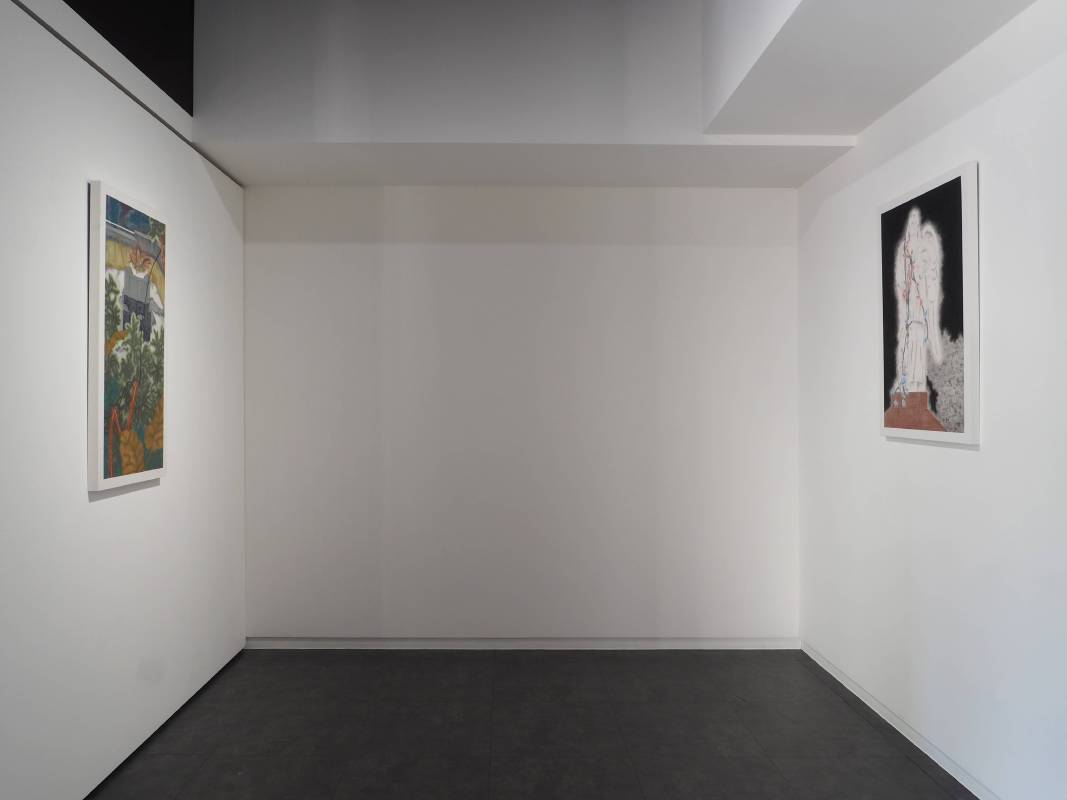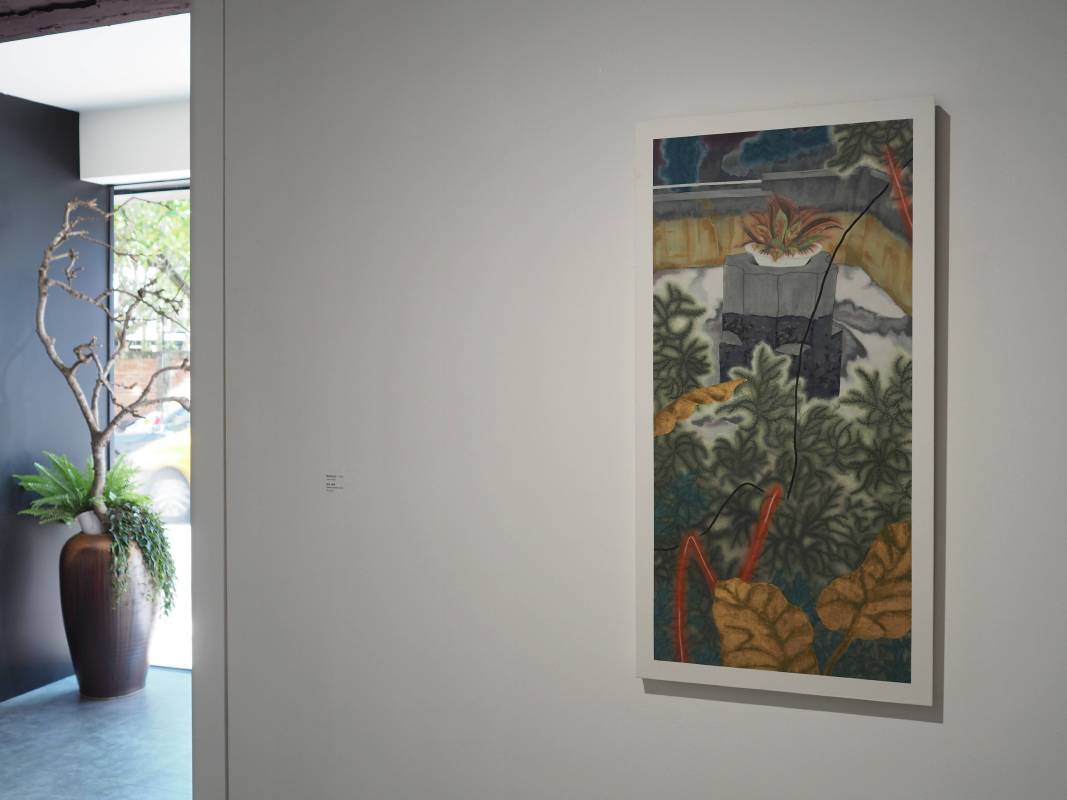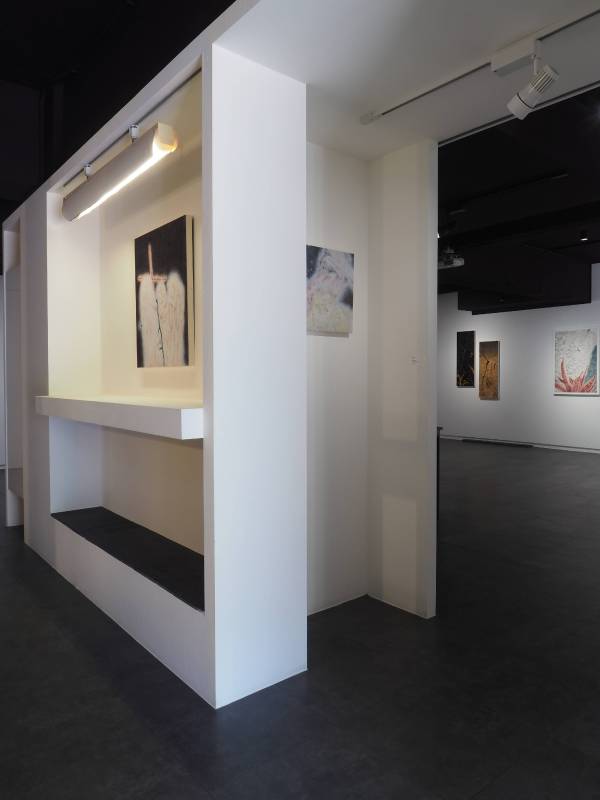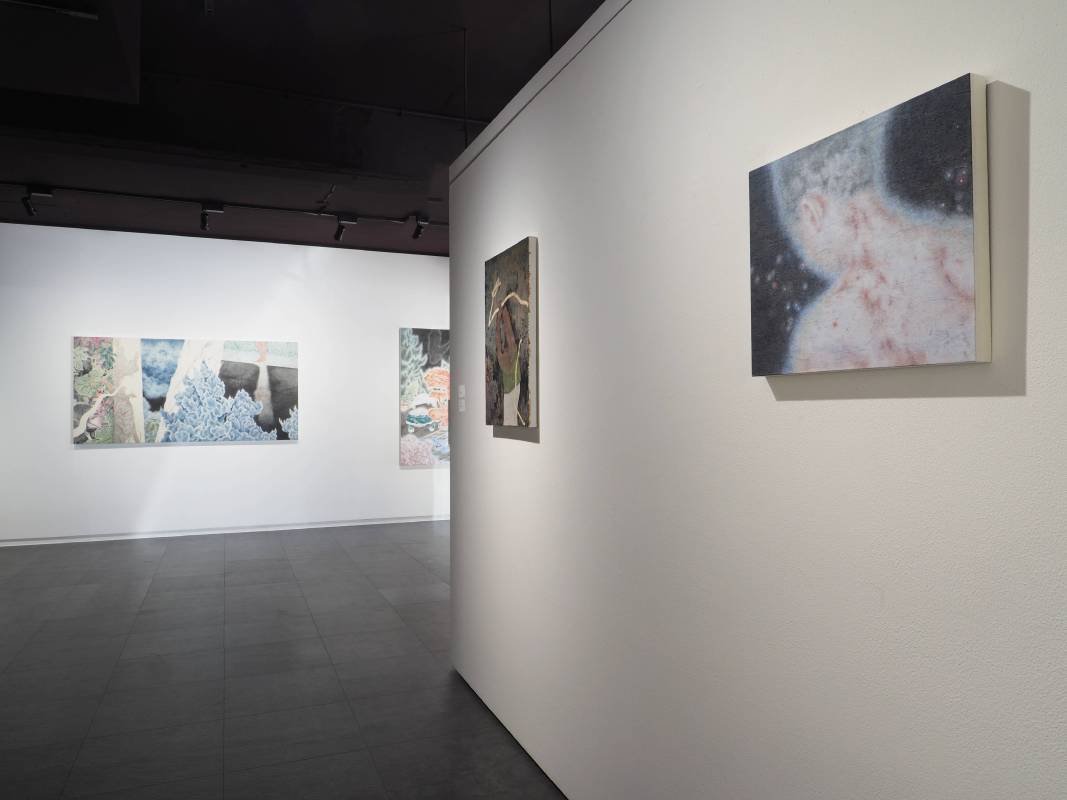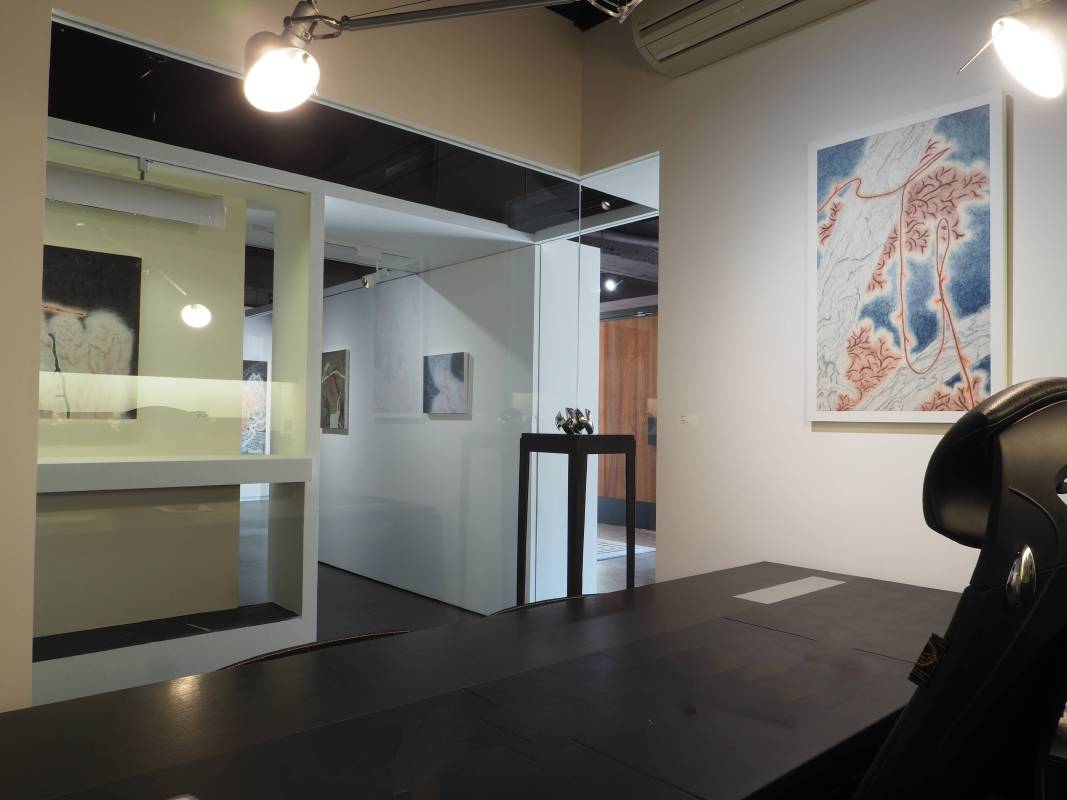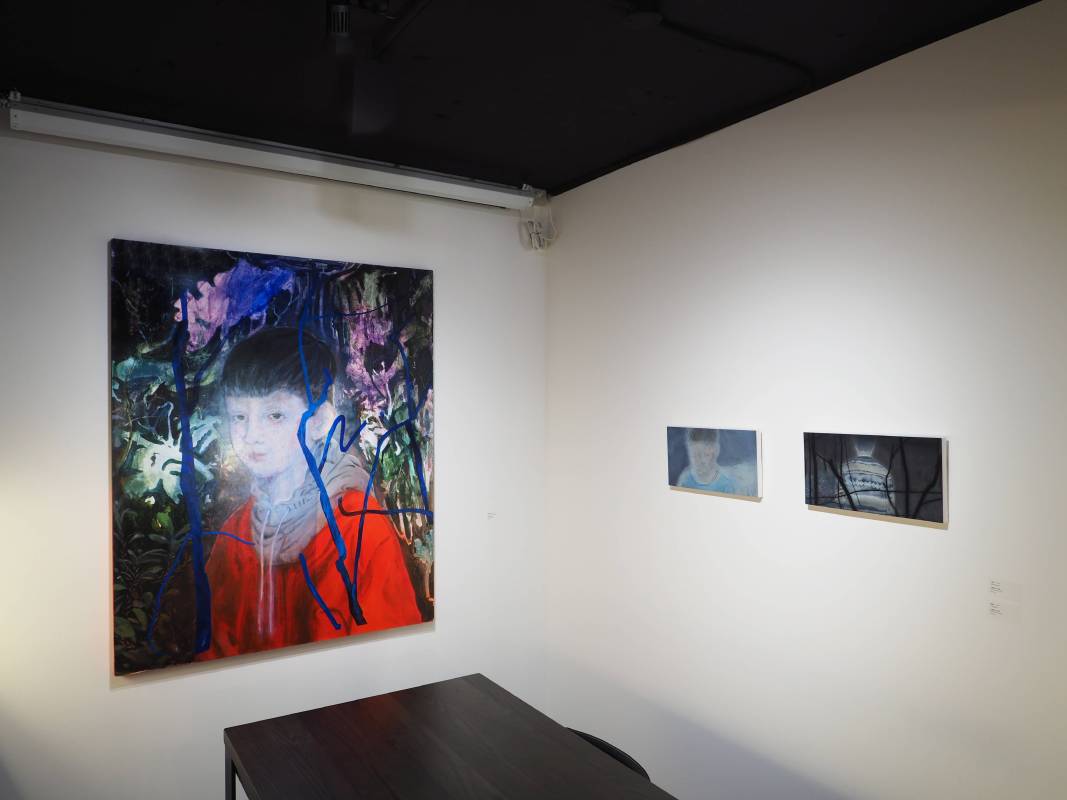赤粒藝術
【空城之計】
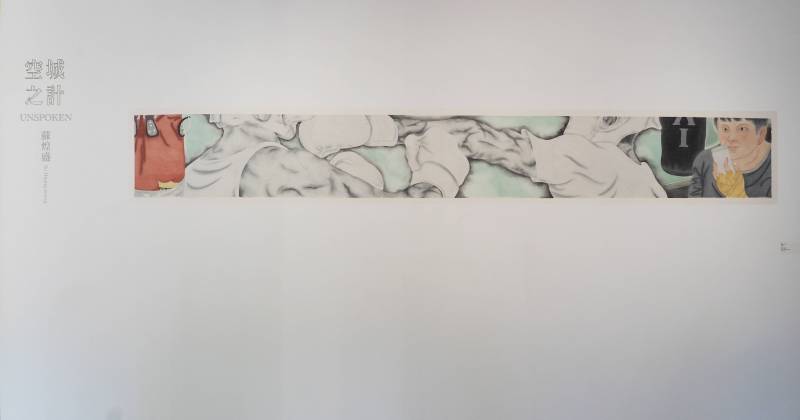
-
論影像時代的水墨美學與創作─蘇煌盛的《空城之計》
東海大學美術系助理教授
吳超然
水墨畫的批判與革新
當中國評論家李小山1985年在《江蘇畫刊》中提出「中國畫已到了窮途末日」之觀點時,引起了當時海內外學界一陣的嘩然。事實上,從19世紀末以來,對於中國畫無法符合時代的批判,從來沒有間斷過。例如,康有為(1858-1927)在《萬木草堂藏畫目》所言「中國近世之畫衰敗極矣」,或他的學生徐悲鴻(1895-1953)所主張的「中國畫改良論」,都依循著這種「末日說」的觀點。當然,上述的觀點,並沒有阻止水墨藝術家從20世紀以來不斷的進行自我反思與回應。例如,臺灣二次戰後的「五月」與「東方」畫會,或是中國在1980年代以後的「新文人畫」,或近期的「新工筆」。
具體而言,如何面對沈重且巨大的傳統,以及如何因應西方當代藝術潮流,始終是近百年來水墨畫家所面臨的嚴肅挑戰。17世紀石濤(1642-1707)的名言「筆墨當隨時代」在曲解下,時常會造成人們誤以為「筆墨」的革新就等同於繪畫的現代化。事實上,如果水墨畫(中國畫)要進入到當代藝術的話語系統進行討論,那麼水墨畫首先就不能再孤芳自賞的要求被列為「特殊的畫種」而被保護;水墨,除了「筆墨」之外,也必須如同其他畫種一樣,在繪畫語言、內容、形式、色彩與整體的構成上,可以進行當代的對話與評論。
影像與水墨
當攝影術在1830年代被發明之後,藝術史其實不僅進入到了影像的時代,也從而在根本上改變了人類觀看與記錄外在世界的模式。高居翰在《氣勢憾人:17世界中國繪畫中的自然與風格》裡提到17世紀西方傳教士從歐洲帶來的版畫造成看過這些作品的中國畫家「無法抹除的視覺經驗」(因而造成17世紀中國繪畫的視覺獨創性)。同理,攝影術的發明之後,從光學與化學顯影進展到今日的數位影像,難道我們每日所經歷的觀看經驗─看電視、手機螢幕、i-pad到電影會跟農業時代的人們一樣嗎?我們對於色彩的感覺、視覺記憶保存的方式、聲光影音的身體感受,在進入到影像時代之後,事實上在演進的過程中已經逐步脫離前工業化時代的觀看模式。
既然如此,那麼水墨如何回應這個巨大的視覺變異?不回應,然後把水墨當作是一種特殊而須被保護的畫種(堅持其底線與傳統),其實也是一種回應。但是,像蘇煌盛這群誕生於數位與資訊時代的年輕水墨創作者而言,他/她們不僅無法迴避影像時代對於創作的衝擊,更多人選擇用不同的方式,試圖讓水墨與影像進行對話。
蘇煌盛與他的近作
蘇煌盛畢業於國立臺北藝術大學研究所水墨組,分別授業於臺灣著名水墨畫家李義弘與潘信華。從他2016年的首次個展《製相術》迄今,可以說是在臺灣同輩之中,對於水墨的材質研究、筆墨技法與裝裱形式上,確有獨到精闢之處。對於一位才滿32歲的年輕水墨藝術家,我們很難以「通會之際、人書俱老」的審美標準來苛求。但是對他而言,更值得關注的是:(1)水墨材質先天的特性或制約,應該如何駕馭?(2)年輕世代所經歷過的視覺養分與造型語彙,如何與傳統嫁接、轉化?(3)他/她們將會如何在這個時代創造出新的水墨內容與表現?
蘇煌盛在上述的三個提問中,非常難能可貴的都在他的作品中得以適當的回應。2016年的〈樹林 4〉或2017年的〈樹林5〉,前者長達754 cm,後者長達1309 cm。這兩件作品前者作於絹本,後者畫於紙本。光是長卷的尺寸就有十足的挑戰。他深知傳統的長卷大都用於表現山水(如黃公望的〈富春山居〉),但做為一位都會型態的年輕藝術家,山水的意象離他遙遠。因此,在這類的長卷作品中,他通常選擇以他所居住或熟悉的地方做為畫面中穿插的場景。又如,本次展覽的〈熱谷〉(2019),畫面中以一位手中拿煙的半身青年起首,透過煙霧裊繞做為場景的串連,然後帶出他日常生活所見的種種─公園裡帶刺的藤蔓和花木、流浪漢、流浪狗。乍看突兀粗線,不僅是他用來連結轉場的手段,同時也刻意製造出另一層的畫面空間深度感。
此外,這次展覽中的〈偶像III〉,根據他的說法是在描寫他散步時所經過的「一個教堂的雕像,然後上面有聖誕燈飾」。在此,蘇煌盛似乎沒有要特別的去凸顯社會或宗教的議題,而是把重點放在聖誕燈飾的人造光源(與顏色),以及那一條纏繞在雕像上的線條表現。19世紀以來,印象派畫家在作品中對於光與色之間的討論可謂具體而充分。然而,傳統水墨的顏料與紙張的限制卻使得20世紀以來的許多水墨畫家裹足不前。訪談中,蘇煌盛談到了夜店、聖誕燈飾與電腦螢幕的光。既然傳統國畫顏料無法滿足這個新的需求,於是他轉向了日本畫的顏料─土繪具、岩繪具與水干。在金箔系列的作品中(如〈金色樹枝〉,2018)則是回到光線與反射之於色彩的討論。他也提及如果站在適當的角度與位置,觀者的投影就會有如鏡像般的出現於畫面,並構成有趣的視像重疊。
影像的另一個特色是可以記錄、保存與編輯。《空城之計》中的〈拳擊〉題材來自於蘇煌盛練習拳擊的經驗。這件作品中,他不僅是利用線條來表達速度感,更重要的是他透過朋友的現場錄影畫面,重新以第三者的立場來觀看自己打拳的過程。在作品的開始處,他安排了自己進入畫面成為另一位觀看者,然後當觀者的視線往左邊移動時,他又成為了拳擊練習中的參與者。這樣的多重角色介入與抽離(觀看自己的影像),成為他回應傳統長卷的線性時間敘述的方式。
此外,數位影像的另一個特質是可以編輯。蘇煌盛的許多草稿會輸入到i-pad,然後再進行修圖。他也提及「草稿在電腦螢幕上,經過數位軟體的修改之後,有時候會有意想不到的(數位)筆觸效果,然後我會在原作上再去模擬這種效果」。已經過世的評論家李渝曾在《族群意識與卓越風格》中提出警告說「水墨是農業社會的產物」。她的意思並非全盤的否定水墨在當代發展的可能,而是指責那些抱殘守缺的水墨創作。我們在蘇煌盛《空城之計》的作品中,看到了許多新的嘗試與可能。以32歲之姿,把水墨帶到當代藝術的競場,並能與這個時代進行深刻而誠懇的對話,我相信蘇煌盛的水墨創作,必然精彩可期。
On Ink Wash Aesthetics and Creation in an Era of Images – “Unspoken” by
Su Huang-seung
Wu Chao Ran
Assistant Professor, Department of Fine Arts, Tunghai University
Chinese paintings have never ceased to be subject to the criticism that they
could barely keep up with the times. This fact, however, has not distracted ink artists from self-reflecting or responding since the 20th century, e.g., the Fifth Moon and Eastern painting groups in Taiwan after WWII, “new literati paintings” in mainland China after the 1980s, and the more recently “new meticulous paintings.”
For nearly a hundred years, the ink painters have been faced with a severe
challenge, in particular, of how to deal with such a ponderous and gigantic
tradition, and to respond to the trend of contemporary art in the West. If we really want to discuss ink paintings in the discourse system of contemporary art, in
addition to a focus on “brushwork,” there should be contemporary dialogues and
comments upon the language, content, form, color and overall composition of the
paintings, as should other categories of paintings.
Art history entered an era of images in the 1830s with the invention of
photography technology. It has since exerted an influence on our feelings of
color, way of preserving visual memories, and physical feelings towards
audio-visual effects, and radically altered how human beings view and document the outer world.
How does ink wash respond to this enormous visual change? It may well do
nothing at all, and fall into a certain category of paintings that should be
protected (by sticking to the principles and tradition). To young ink artists born
into a digital and information age like Su, the impact of the era of images on their creations is simply inescapable. Many of them strive to initiate dialogues
between ink wash and images in diverse ways.
Images can document and preserve moments, and be edited. One of the exhibits in “Unspoken,” Boxing was inspired by Su’s experience of boxing practice. He not only portrayed speed with lines, but, above all, observed how he practiced
boxing from a third person’s point of view through clips filmed by a friend. At the very beginning, he entered the scene himself as another viewer, and then
became a participant in the boxing practice when the viewer glanced to the left. Such intervention and detachment of multiple characters (by viewing his own
images)are his way of responding to linear narration of the traditional scrolls.
Editability is another trait of digital imaging. Su, who uploads many of his drafts
to iPad for revision later, mentioned that, “I revise the drafts on the computer
screen through digital tools, which sometimes produced an unexpected (digital)
brush stroke effect. I will imitate the effect in the original drafts.”
We can see a wealth of new attempts and possibilities in his works on display in “Unspoken.” At only 32, he has extended the ink wash to the realm of
contemporary art, bringing it into a profound and sincere dialogue with the
current times.I am sure Su’s ink paintings will be something worth looking
forward to. (abridged translation)
推薦展覽
view all赤粒藝術
【自然與記憶梁兆熙2024個展】Nature and Remembrance: Solo Exhibition of LIANG Zhaoxi
日期:2024-05-04 ~ 2024-06-16|台灣,台北市
